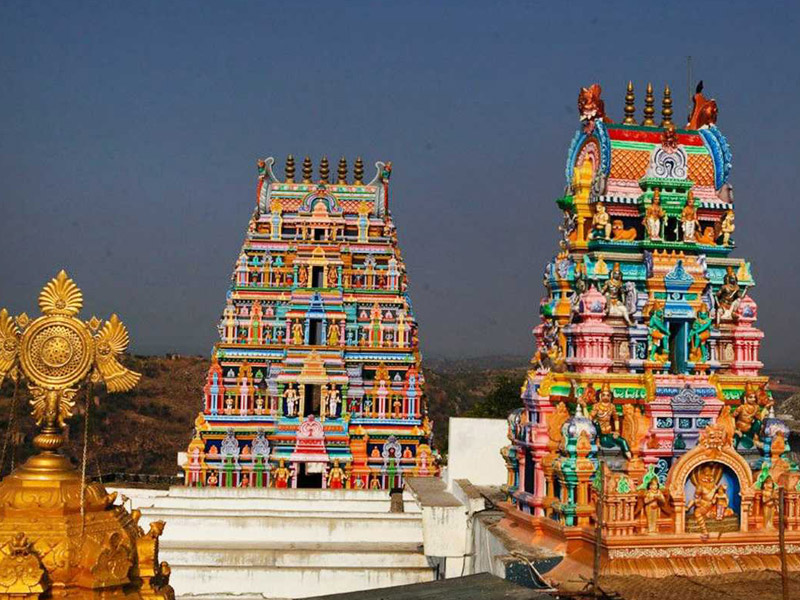Bhongir Fort
The Bhongir fort adorns the place from the time it was built in 10th century. Bhongir Fort was built on an isolated monolithic rock by the Western Chalukya ruler Tribhuvanamalla Vikramaditya VI in the year 1076 and was thus named after him as Tribhuvanagiri, later it was called as Bhuvanagiri. Some of the inscriptions found in the fort were in Kannada and Telugu language highlighting the lifestyle of the people of that era. The inscriptions, the architecture and some sculptures found in the fort reveal that the fort was ruled by the Chalukya dynasty for a long time and then by the Kakatiya dynasty. The stone wall, the steps through the granite archways and the crumbling stucco ruins of the later age, still adorn the place.
Somewhere in 15th century, the fort was ceded to the Bahamani Sultans and then was taken over by a local governor. The Qutub Shahis’ used the fort as a prison for those who aspired to snatch their throne. During the time of the British, the fort escaped their attention and was not occupied. Bhuvanagirigir was much ignored after the downfall of the Nizams at the time of communist revolution in the late 1940s.
Surendrapuri
Surendrapuri, Bhuvanagiri is a museum located in Yadadri Bhuvanagiri district is about 55 km from Hyderabad, India. Nearest Railway station is Bhongir railway station [1] The museum is also known as Mythological Awareness Center. As the name indicates, it was established to create an awareness of Indian mythology, or more specifically Hindu mythology. It was established by Kunda Satyanarayana in memory of his son Surendra. It is also known locally as Kunda Satyanarayana Kala Dhamam, in his honor. Meaning that Kunda Satyanarayana has used artistry extensively to depict mythology.
It contains nearly full sized replicas of almost all the important Hindu temples in India. The architecture of the temple and the sculptures inside makes one feel as if one is in the actual holy place itself. There are a few hundred such replicas. The sculptures are displayed in open air indoors, depending on the size of the replica and the mythological scene portrayed.
Yadagiri Temple
Sri Lakshmi Narasimha Temple also known as Yadadri and Yadagirigutta temple,[1] is a Hindu temple situated on a hillock in Yadagirigutta of Yadadri Bhuvanagiri district of the Indian state of Telangana. The temple is an abode of Narasimha, an incarnation of Lord Vishnu. It is located about 120 kilometres (75 mi) from Suryapet and 88 kilometres (55 mi) from Nalgonda and 62 km from Hyderabad.
Yadagiri is named after a sage named Yadava who performed services Lord Vishnu as Narasimha. Being please with him the lord gave him darshan in three forms: jwaalaa Narasimha, ganDabhErunDa Naarasimha and yogaananda Narasimha. Yadava begged Narasimha to remain on the hill in these forms. For this reason, the Lakshmi-Narasimhadeva temple on the hilltop has deities of Narasimha in all three forms embedded in stone in the main cave.
All India Institutes of Medical Sciences
The State government has decided to set up the All India Institute of Medical Sciences (AIIMS) at Bhongir instead of the earlier plan of converting the Nizam’s Institute of Medical Sciences (NIMS) into AIIMS and shifting it to Bibinagar.
The State government has identified 1,000 acres of land on a single stretch at Bhongir, 50 km away from Hyderabad, to set up the hospital as the Union Ministry of Health had rejected the State government’s earlier proposal to convert the existing NIMS Hospital into the AIIMS.
In an official communication, the Union government has informed the State government that the NIMS campus does not meet the parameters and standard requirements set for the establishment of the Centrally- sponsored medical institute.




